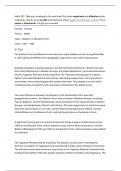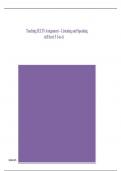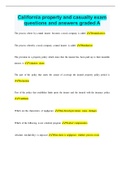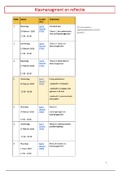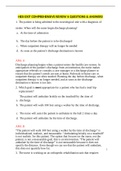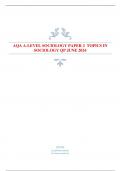College aantekeningen
Difference between East/West Fronts WWII - A Complete Study Guide
- Vak
- European History
- Instelling
- 3rd Degree
**The Western and Eastern Fronts: A Comparative Analysis of World War II** This comprehensive document provides a detailed examination of the Western and Eastern Fronts during World War II, highlighting the significant differences in geography, opponents, and civilian experiences. The document d...
[Meer zien]
